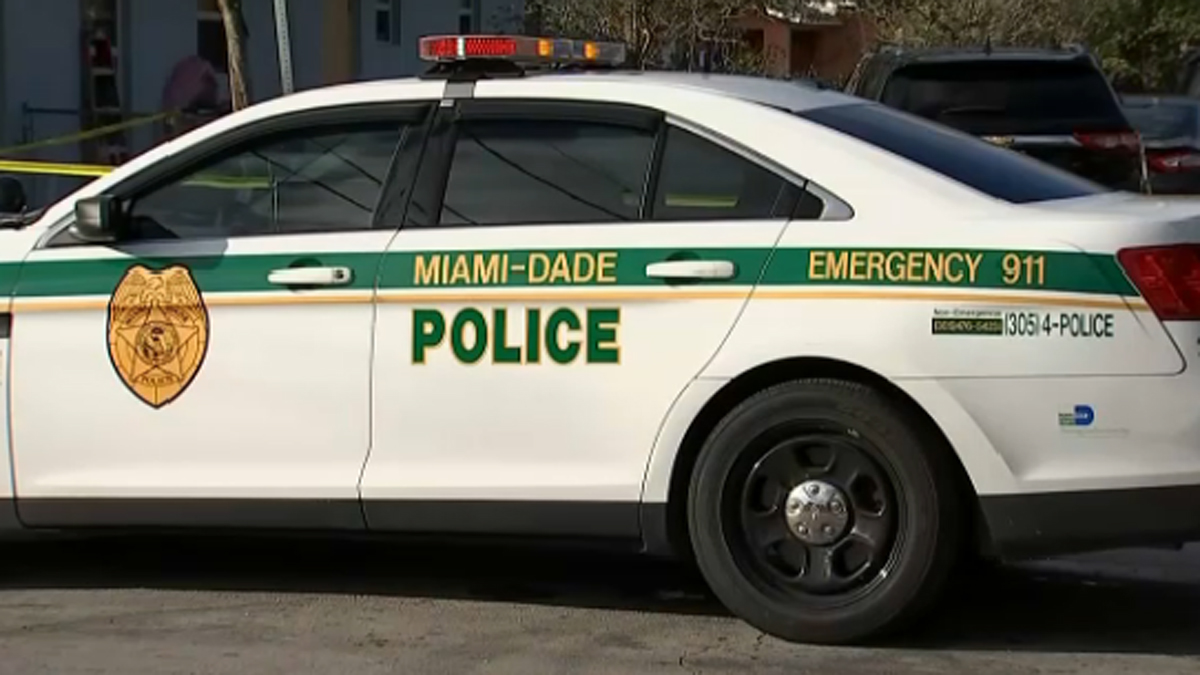Electric vehicle makers bank on plugging into Miami’s love affair with flashy cars
In his immortal ode to Miami, Will Smith summed up the city’s love of luxury vehicles with the rhyme: “Water so clear you can see to the bottom / $100,000 cars, everybody’s got ‘em.”
Lucid Motors is one of the electrical vehicle makers hoping Miamians will be willing to pay at least that much for its growing line of ultra-luxury cars and SUVs. The most affordable version of the Lucid Air sedan starts at $87,400. The most expensive model starts at $249,000. And Lucid, which makes some of the priciest electric cars in the world, is just one of the many automakers selling $100,000+ electric vehicles to Miami buyers seeking more flash for their cash.
Lucid has been selling cars in South Florida since December 2020, when it opened two showrooms (it prefers to call them “studios”) in Miami’s Brickell City Center and The Square in West Palm Beach. These two South Florida outposts were the first showrooms Lucid built outside of its home state of California. They came before the company’s eventual expansion to New York, Chicago, Washington, D.C., and 20 other locations.
“Everyone knows California is a big home for electric vehicles,” said Jeff Curry, who heads Lucid’s marketing division. “That’s where our company is based and where Silicon Valley is. But South Florida has become a really important EV market.”
D.A. Varela
/
Miami Herald
Miami’s streets are now dotted with high-end EVs made by some of Lucid’s rivals, including Rivian R1T pickup trucks (which start at $73,000 but can run up past $100,000), electric Hummers (ranging from $87,000 to $120,000), Porsche Taycans ($86,700 to $211,000) and Teslas of all sorts (which start at a comparatively cheap $47,000 but can run up to $250,000).
In a roundabout way, Miami’s love of flashy electric cars is paving the way for more affordable EVs to roll out across Florida and around the world. Luxury buyers pay high prices that subsidize the construction of new electric car factories and research into new generations of batteries that have longer range and lower cost. Meanwhile, demand from early EV adopters has pushed governments and businesses to invest in public charging stations.
Together, these developments are set to expand access to electric cars and cut the carbon emissions of the transportation sector, which is the biggest source of climate-altering greenhouse gasses in the US economy, according to the US Environmental Protection Agency.
South Florida, the lesser-known EV capital of the US
Lucid’s Brickell studio feels more like an Apple store than a car showroom. The walls are paneled in a light wood and slickly lit. Synthy bass beats ooze out of hidden speakers. Next to an actual car that’s on display, there’s a pair of freestanding car seats with virtual reality headsets resting on them, where customers can sit and see what the car might look like with different kinds of interior trim.

D.A. Varela
/
Miami Herald
During Art Basel earlier this month, Lucid hired the digital art studio W1 Curates to install wraparound screens inside and outside the showroom to display a three-and-a-half minute loop of art videos and NFTs to draw in the high-rolling art aficionados who had descended upon the city. Among them was New York Mets star shortstop Francisco Lindor, who recently signed a 10-year, $341 million contract and visited the showroom with his family to test drive a Lucid Air.
It was a scene well suited for South Florida’s extravagant luxury car market.

D.A. Varela
/
Miami Herald
Florida is the second-biggest electric vehicle market in the US, after California. Within the state, Miami-Dade and Broward counties boast the highest number of electric car sales, according to Jennifer Szaro, the chair of Drive Electric Florida, an industry group that promotes electric vehicle adoption within the state.
South Florida is especially dominant in luxury EV sales.
“We saw a lot of uptake in Teslas down there,” said Szaro, “and when the Rivian came out, pre-orders were really, really high in the Miami, Broward, Palm Beach area.” Other major markets in the state, including the Tampa, Orlando, and Jacksonville metro areas, tend to focus on more affordable electric car models, like the Nissan Leaf, Chevy Bolt, and Kia Niro.
“People there want to have the latest, newest thing,” AutoTrader executive editor Brian Moody said of Miami’s car market. “A lot of these new electric cars incorporate some kind of bling factor, either through performance, luxury or design.”

D.A. Varela
/
Miami Herald
Aside from a few $2 million+ prestige cars from niche automakers like Lotus, Rimac and Nio (only a few dozen of which have ever been manufactured), Lucid sells some of the most expensive electric cars in the world. It’s positioning itself as an even more luxurious alternative to Tesla, the reigning champion of the high-end EV market. It has woven the “bling factor” into its brand by lavishing its cars with pricey leather and wood interiors, packing its batteries with over 400 miles of range, and producing avant-garde ads to announce its new releases.
That branding appealed to Andy Hardin, a retired bank president who became enamored with Lucid after seeing the fictional high-powered lawyer Sam Margolis drive one in the Amazon Prime series “Goliath.” He recently sold his prized 1966 Ford Thunderbird and pre-ordered a Lucid Air.
“This is a high-end luxury car, whereas the Tesla was like a really high-end car, but with a starter set interior,” said Hardin. “It’s not luxurious like this is luxurious.”

D.A. Varela
/
Miami Herald
Luxury EVs subsidize affordable electric cars
Most of us will never own a Lucid. But the recent success of luxury EV brands has made it much more likely that many of us will wind up driving an electric car in the coming years.
“Think about runway fashion,” said Szaro. “How many people are buying Christian Dior? Not a lot. But Christian Dior’s lines set the tone for fashion in the affordable markets.”
Szaro says the same is true of cars. Electric vehicles debuted in the luxury market, where wealthy customers enthusiastically bought them up, creating years-long waitlists for cars like the Tesla Model 3 and the Rivian R1T. Encouraged by these results, automakers are expanding offerings of more affordable EV models, like the Chevy Bolt, which starts at $25,600. Chevy’s parent company, GM, and Honda have announced plans to sell several models of electric cars for less than $30,000 by the end of the decade.

D.A. Varela
/
Miami Herald
“You’re going to have these flashy high-end vehicles that have all the bells and whistles,” said Szaro. “Then the engineers that are working on the next generation of affordable electric vehicles can pull from that experience and say, ‘How do we make something that’s maybe not as shiny, but can get the same range?’”
Obstacles remain for Florida EV adoption
Still, just 6% of cars sold in Florida are electric, according to a September report from Atlas Public Policy and the Southern Alliance for Clean Energy. That number is twice as high as it was a year ago, but the state has a long way to go before electric cars become the dominant form of transportation.
One of the biggest obstacles is a lack of public charging stations. In Florida, where drivers might have to evacuate long distances at short notice because of a hurricane, fast charging is especially important. “Currently there is little infrastructure in the interior of the state to support evacuation, significant portions of I-75, and I-10 in the panhandle have very little fast charging,” state officials wrote in a 2020 report.

In September, the White House approved $198 million in funds from the federal infrastructure bill to pay for Florida’s plan to build more charging stations. Under the plan, the state will cover an extra 4,000 miles of road with fast charging stations spaced no more than 50 miles apart, which will each have at least four plugs that can churn out 150 kW of charge at a time.
This climate report is funded in part by a collaboration of private donors, Florida International University and the Knight Foundation. The Miami Herald retains editorial control of all content.
This story was produced in partnership with the Florida Climate Reporting Network, a multi-newsroom initiative formed to cover the impacts of climate change in the state.



